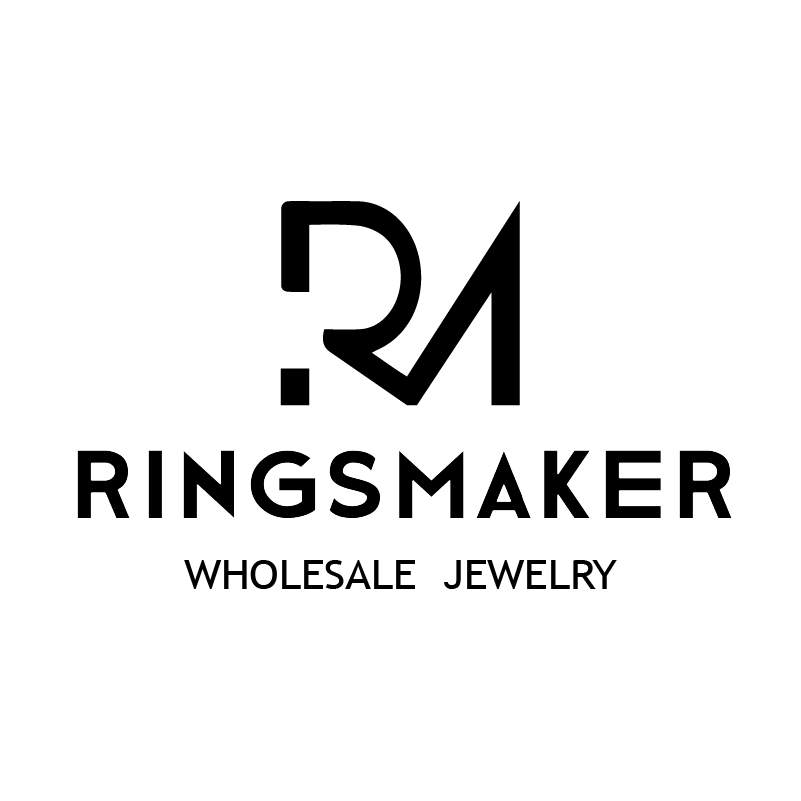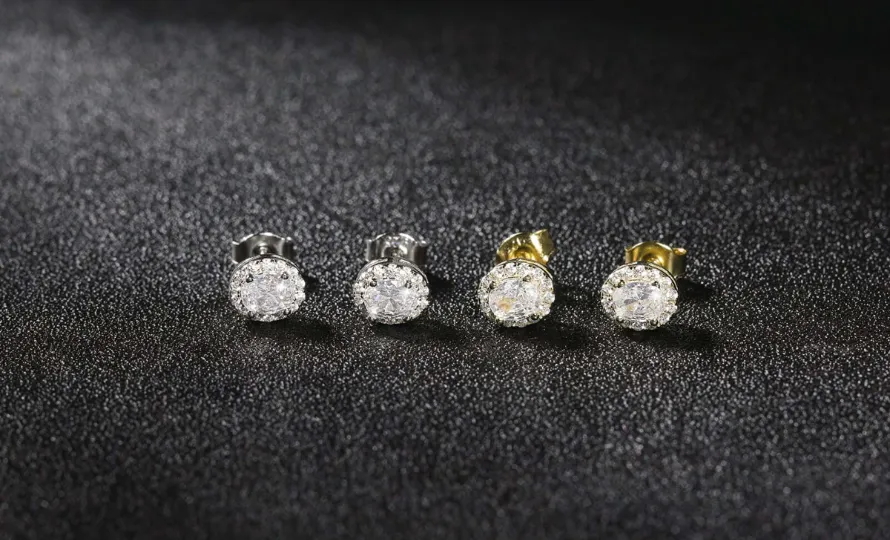Small earrings, big brilliance, they play a very important role in the entire jewelry category. Properly worn earrings will improve the sensory face shape, and when paired with other accessories, they will increase the overall beauty and fashion. Some materials Earrings are very expensive, but their overall quality and size are relatively small, making them difficult to clean. As a guide to cleaning earrings, this article will teach you how to clean and maintain earrings of different materials and styles at home.
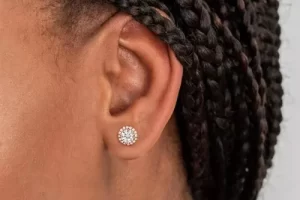
Learn about earring hygiene
Why do you need to clean your earrings? First of all, earrings are in direct contact with the ear skin. If they are not cleaned for a long time, a lot of bacteria, grease and dirt will adhere to the earrings, which may lead to inflammation and infection of the ear holes and increase the difficulty of treatment. Therefore, cleaning earrings is the most important compared to other jewelry. .
Basic cleaning supplies for earrings
There is no need to prepare overly professional equipment for cleaning at home. Prepare the following common tools:
Soft bristle toothbrush
small tweezers
lint free cloth
mild soapy water
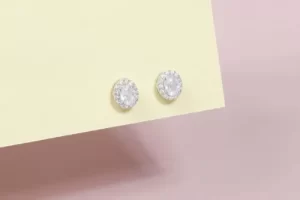
Step-by-Step Guide to Cleaning Earrings
I have divided the cleaning steps into several simple processes. Just follow these steps to clean:
Step 1: Prepare Cleaning Solution
Mix a small amount of mild soap with warm water. The water must be warm, not hot.
Step 2: Soak the Earrings
Place earrings in soapy water and soak for 15 minutes. This step can loosen attachments and dust on the earrings, making it easier to clean them in the next step. Expensive earrings such as pearls or diamonds need to be treated with extra care. These types of earrings should not be soaked but should be wiped with a damp cloth.
Step 3: Gently scrub the earrings
After soaking, first use a soft-bristled toothbrush to scrub the dirt-dense areas. For tiny gaps, use dental floss and cotton swabs dipped in some soapy water to clean. Be gentle in this step to avoid scratching the earrings.
Step 4: Rinse Earrings
Rinse all areas of the earrings with warm water to remove any soapy residue. Tip: Make sure the sink is closed or place a strainer under the earrings to prevent them from accidentally sliding down the drain.
Step 5: Dry earrings
Pat the earrings dry with a lint-free cloth. Be sure to let them dry completely before wearing them.
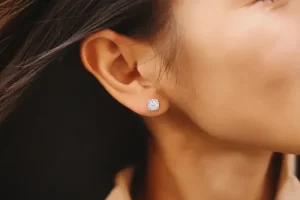
Clean different types of earrings
1.Gold earrings
Gold is relatively easy to clean, take 10k14k as an example, just follow the steps just mentioned.
2.Silver earrings
Silver earrings generally lose their luster over time. Make a paste using a DIY solution of silver polish or baking soda and water.
Apply the paste with a soft cloth, wipe gently, then rinse and dry.
For intricate designs, use a soft toothbrush to get into small crevices.
3. Diamond earrings
Diamonds can be cleaned with warm water and a mild dish soap solution.
Soak for 30 minutes, then scrub gently with a soft-bristled toothbrush.
Rinse thoroughly and dry with a lint-free cloth.
4.Pearl earrings
Pearls are very delicate and should never be soaked in water.
Just wipe with a soft damp cloth.
5. Gemstone earrings
Most gemstones can be cleaned with warm soapy water, but some, like opals or emeralds, require extra care.
6. Enamel earrings
Wipe it clean with a soft damp cloth.
Avoid soaking and harsh chemicals that can damage tooth enamel.
7. Stainless steel earrings
Soak in warm, soapy water and scrub gently with a soft-bristled brush.
Rinse and dry with a soft cloth.
8. Platinum earrings
Clean with a solution of mild soap and warm water.
Soak briefly, then scrub gently with a soft brush.
Rinse thoroughly and dry.
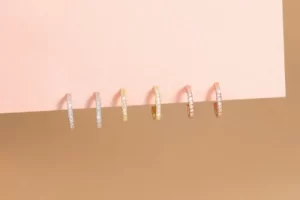
Signs You Need to Clean Your Earrings
It’s time to clean your earrings if the following signs occur:
1. Visible dirt or grime
If you notice buildup, tarnish, or dirt on your earrings, it’s definitely time to clean them.
2. Dull or tarnished
Earrings can lose their luster over time, especially if they are made of metals like silver or gold or contain gemstones.
3. Bad smell
If your earrings have a bad smell, it’s a sign that they have accumulated bacteria or other organic residue.
4. Skin irritation or infection
If wearing earrings causes redness, itching, or irritation, it may be because the earrings are dirty.
5. Difficulty inserting earrings
If you find it difficult to put your earrings on, you may have build-up on the studs.
6. Color change
Any discoloration indicates the need for cleaning, and the silver may appear black.
7. It’s been a long time since the last cleaning
If it’s been a few months since you last cleaned your earrings, it’s a good idea to clean them even if they don’t show obvious signs of dirt.
8. After exposure to harsh conditions
If you wear earrings while performing activities that expose them to sweat, chlorine, salt water, or lotion, you should clean them afterwards.
9. Allergic reaction
Sometimes, dirt buildup on earrings can cause an allergic reaction, even if you’ve worn the same pair of earrings before without any problems.
10. Residues after wearing
If you notice residue on your earlobes or posts after removing your earrings, they need cleaning.
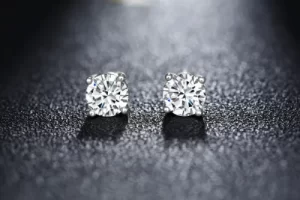
Learn about metal allergies and earrings
Metal allergies in jewelry are a frequently discussed topic. Many people are troubled by skin allergies to metals. The following are ways to help you understand and correctly understand metal allergies:
Common allergenic metals in earrings
Nickel: The most common cause of metal allergies. Many metal alloys used in jewelry, including some gold and silver, contain nickel.
Cobalt and Chromium: Less common than nickel, but can also cause allergic reactions.
Symptoms of metal allergy
Skin irritation: redness, itching, or rash at contact site.
Swelling: The earlobes may become swollen and tender.
Blisters or dry patches: Severe reactions can cause the skin to blister or become cracked.
Choose hypoallergenic earrings
Look for nickel-free products: Many brands now offer nickel-free earrings, which are much less likely to cause allergic reactions.
Precious Metals: High purity gold (14k or higher) and sterling silver are generally safe bets. However, please be careful as some may still contain trace amounts of nickel.
Platinum and Titanium: These metals are generally hypoallergenic and safe for sensitive skin.
Surgical Stainless Steel: Typically used for new piercings because it is less likely to cause a reaction.
What to do if there is a reaction
Remove your earrings: If you notice symptoms of an allergic reaction, remove your earrings immediately.
Clean the area: Gently clean the affected area with mild soap and water.
Cold compresses: Reduce swelling and relieve irritation.
If reaction is severe or does not improve, seek medical advice.
prevention reaction
Allergy Testing: If you’re not sure which metal you’re allergic to, consider getting an allergy test.
Apply a barrier: For earrings that cause minor reactions, applying clear nail polish to the studs can provide a protective barrier.
Choose your earrings carefully: Be sure to check the materials used in your earrings and choose ones that are hypoallergenic.
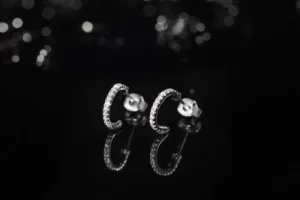
FAQs
Can I use vinegar to clean earrings?
Vinegar can only be used to clean certain types of earrings, such as gold and diamond earrings, which do not react with the acetic acid in vinegar. However, avoid using it on pearl earrings.
If I wear my earrings every day, how often should I clean them?
If you wear your earrings every day, it’s a good idea to clean them at least once a month.
Can toothpaste be used to clean earrings?
Toothpaste can be used as a DIY cleaner for some types of metal earrings, but it is abrasive and should not be scrubbed for too long.
Is it okay to sleep with earrings on?
It is generally recommended to remove earrings before going to bed to prevent damage or discomfort, especially larger or dangling earrings.
